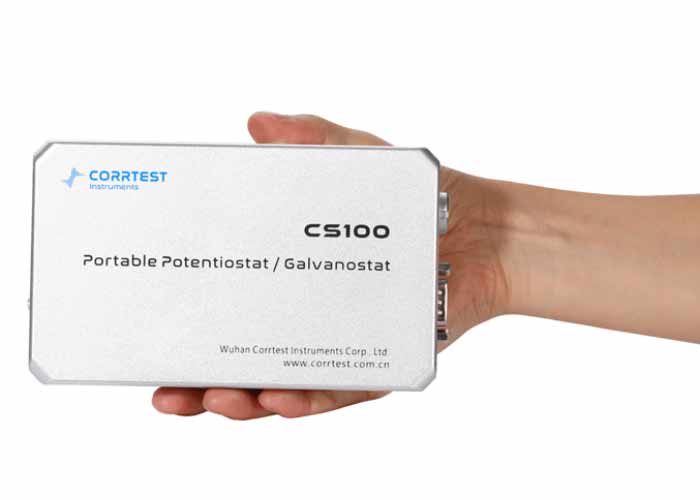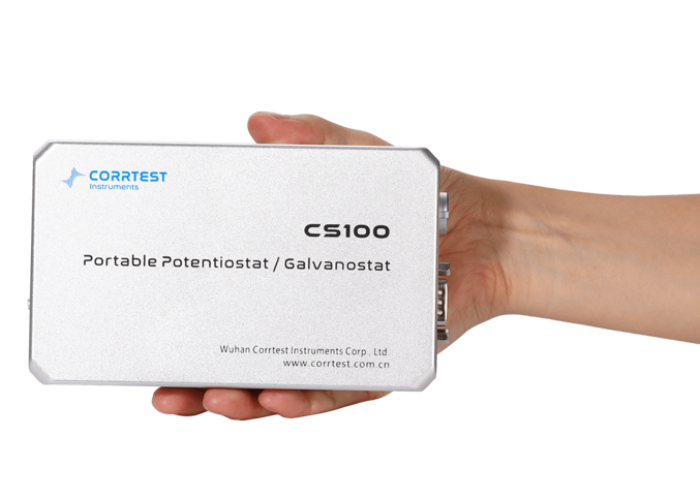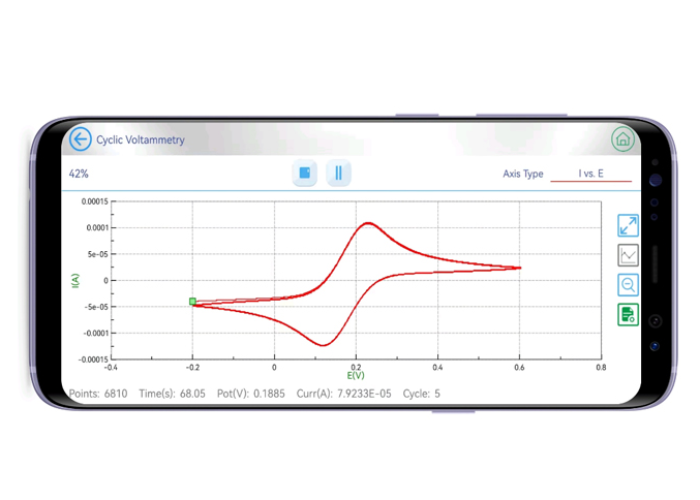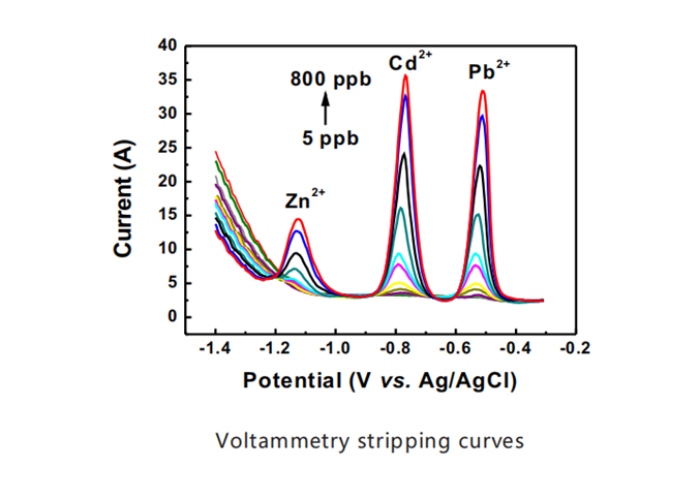- CS100E handheld potentiostat*1
- CS Studio software
- Type-C USB cable *1, Power adapter *1, Electrode cable*2
- Dummy cell*1, Manual *1

Portable potentiostat CS100 (No EIS)
Portable potentiostat CS100 (No EIS)
CS100 Highlights
Compared with CS100E, CS100 excludes the EIS technique in the software. Other places are the same.
The CS100 is internally powered by a lithium battery, which can be placed in a glove box or used outdoors. The lithium battery can be charged in advance, and the Type-C interface is used for charging and communication. The circuit adopts a floating-ground design, and the electrochemical parameters of the grounding system can be measured without an isolation transformer.
CS100 portable potentiostat is mainly used for battery testing, electroanalytical chemistry, and corrosion electrochemical testing. The voltage control range is ±10V, compliance voltage is ±12V, the current output range is ±45mA, and the minimum current resolution can reach 100fA.
Applications
- The small and convenient potentiostat can be used for performance testing of battery materials in the glove box
- Ultra-low detection limit of heavy metal ions, suitable for water quality testing in environmental protection
- High current accuracy, suitable for small current detection in biosensor
- Comprehensive functions, can be used for the active ingredients detection in food and drug field
- Easy to carry, suitable for bridge corrosion and soil corrosion measurements
Overview
The CS100 portable potentiostat is composed of DDS digital signal synthesizer, constant potential control, dual-channel high-speed 16bit/high-precision 24bit AD converter. The built-in DDS and dual-channel signal correlation integral circuit improves the measurement accuracy of AC impedance. The EIS frequency range is 10μHz~1MHz. It can automatically perform electrochemical impedance test under open circuit potential or any DC bias voltage. Built-in DC offset compensation circuit can effectively improve the measurement accuracy of AC signals. The amplitude of the exciting sine wave can be set between 0 ~±2.5V. The EIS data format is compatible with ZView, and ZView can be directly used for impedance spectrum analysis. CS100E potentiostat can also output sine wave, square wave, triangle wave, sawtooth wave, pulse wave, etc., and the output frequency is 0~100KHz.
The command control and data analysis of the CS100 portable potentiostat are realized through the CS Studio software. The software has multi-coordinate graphic display and zooming, data/graphic storage/printing, and interactive help. The software has techniques for materials and corrosion electrochemistry, including automatic or manual reverse sweep of passivation curve, electrochemical reactivation method, solution resistance (IR drop) measurement and compensation.
CS Studio software also has a complete data analysis function, which can achieve the volt-ampere curve smoothing, the peak height and area integration, and the electrochemical parameters analysis of the polarization curve, including polarization resistance Rp, Tafel slope ba, bc, and corrosion current density icorr, corrosion rate calculation, etc., noise resistance Rn and power spectrum can also be calculated, and the graph can be copied to other files in vector mode.
The CS100 portable can be controlled by either our desktop software or App.
Included items
Technical Specifications
Precision engineering for accurate measurements
| Communication | USB or Bluetooth |
|---|---|
| Power supply | built-in li-battery [email protected] / USB |
| Size / weight | 150mm x 90mm x 30mm, 500g |
| Support | 2-, 3-or 4-electrode system |
| Potential control range | ±10V |
| Maximum current | ± 45mA |
| Compliance voltage | ±12V |
| Potential accuracy | 0.1%× full range |
| Minimum potential resolution | 10mV |
| Current accuracy | 0.1%× full range |
| Minimum current resolution | 100fA |
| Potential range | ±2.5V, ±5V, ±10V |
| Current range | 200pA~50mA, 10 ranges |
| Reference electrode input impedance | 1013Ω||8pF |
| AC amplitude | 0~±2.5V |
| Signal response bandwidth | 1MHz |
| acquisition rate | 150,000 data points/s |
| CV and LSV scan rate | 0.001mV~ 10V/s |
Methods/Techniques
Want to learn more about these techniques?
Check out our Introduction to Electrochemical Techniques blog for an in-depth overview of their principles and applications.
Customer Reviews
Related Product
Explore our precision instruments designed for electrochemical research and energy applications

Portable potentiostat CS100E with EIS
- Communication: USB or Bluetooth
- Power supply: built-in li-battery [email protected] / USB
- Size / weight: 150mm x 90mm x 30mm, 500g
- Support : 2-, 3-or 4-electrode system
Still Wondering About Something?
Explore our FAQ for fast, clear answers to the most common questions—available 24/7.



